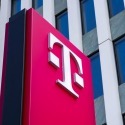Here's How T-Mobile Reduced LTE Congestion by 71%
T-Mobile's CTO Neville Ray built a traffic-forecasting tool in conjunction with Speedtest provider Ookla that the company said helped direct fully $10 billion in network spending over the past five years.

T-Mobile continues to work to consummate its merger with Sprint, an action the company said will position it to build a massive, super-fast 5G network. But contained within the company's merger documents are interesting and noteworthy details about how T-Mobile built its current LTE network.
Specifically, the company uses a network traffic-forecasting and construction tool, built in conjunction with Speedtest provider Ookla, that T-Mobile said has directed $10 billion in network spending during the past five years. And the company said the process has helped it reduce congestion on its LTE wireless network by fully 71%.
T-Mobile's LTE network story begins with CTO Neville Ray, who joined T-Mobile in 2000 and stepped into the company's CTO role in 2010. According to statements he filed with the FCC, that's about the time he began building the operator's network engineering tool.
"In the ordinary course of business, to help project where the existing T-Mobile LTE network will reach resource exhaust, we developed an engineering model to target congestion and to help target annual spending to achieve that goal," he told the FCC. "The key components to a capacity model of this type are a loading forecast (amount of traffic to be supported) and the congestion criteria (based on target levels for quality of experience)."
Although some of the details of T-Mobile's tool have been redacted from the operator's filings, T-Mobile said the tool basically measured the number of customers using each of its cell sites.
"Because LTE cell site sectors have different bandwidths and number of users, we then normalize the number of users per 5 megahertz, which is the smallest used LTE carrier bandwidth," Ray explained. "This normalization process avoids focus on the highest raw number of users and instead applies a priority to sectors where overall loading of the available bandwidth is the highest. For example, a sector that has three users that are demanding a large amount of bandwidth would have a lower priority for resources than a sector that had 100 users demanding a smaller amount of bandwidth."
In various filings with the FCC, T-Mobile explained that LTE technology standards offer no specific guidelines for network congestion thresholds. Therefore, the operator studied the topic and found that customers begin canceling their service if more than 2% of LTE sectors in a market are congested.
However, T-Mobile actually designs its network for 0% congestion.
"Congestion is never totally eliminated for at least two reasons," the operator noted in filings to the FCC. "First, traffic is stochastic [which means that it's randomly determined]. Uncertainties in forward-looking traffic forecasts mean that builds designed to achieve zero percent congestion will result in less capacity than is necessary to solve the congestion in some locations and will result in more capacity than is necessary to solve congestion in other locations. Because congestion cannot be less than zero percent, the inherent uncertainty in traffic forecasts along with the lead time necessary to augment network capacity means that actual realized congestion will be greater than zero percent at any specific time. Second, some planned builds may turn out to be infeasible or take time to implement."
After conducting those calculations, the operator then determined the Mbit/s average throughput that it believes should be maintained in a sector during busy hours. However, that exact figure is redacted in T-Mobile's filings.
So how does T-Mobile put this traffic forecasting tool into use?
First, the operator looks for cells that will become congested. Then it determines the "optimal capacity solutions" like splitting cells (putting two towers where one used to be) or spectrum overlays (adding more spectrum) that would address the problem. Then, after determining the best course of action, T-Mobile's local and regional network teams implement the solutions.
And what are the results of Ray's engineering tool?
"This model has been highly accurate," Ray explained. "For example, when we studied the results of this modeling effort in 2018 (looking at actual congestion as compared to the forecasted congestion), we found that: The sector congestion forecasts were 99.4 percent accurate (only 0.6 percent difference in the actual network congestion levels); Of this 0.6 percent, only 0.4 percent were false positives (sectors that were forecast to congest but did not); The remaining 0.2 percent were false negatives (sectors forecasted as congestion-free but did have congestion)."
It's also worth noting that, for years, Ookla's public Speedtest reports found that T-Mobile operated the nation's fastest network, findings that T-Mobile routinely boasted about until AT&T stole the top spot from T-Mobile earlier this year.
To be clear, T-Mobile's overall successes in the wireless market in recent years aren't due to the performance of its network alone. The company also benefited from the cash and spectrum it received from AT&T in 2011 when their proposed merger collapsed, as well as the "uncarrier" marketing momentum -- including compelling service and pricing offerings -- developed by CEO John Legere and his leadership team.
Nonetheless, Ray's traffic prediction tool can be recognized as a key element in what can only be described as a dazzling performance in the wireless industry that T-Mobile has turned in during the past few years. "There is no other stock in our coverage universe about which we have been as consistently bullish as T-Mobile," wrote the Wall Street analysts at MoffettNathanson recently after T-Mobile turned in another industry-leading quarterly report.
— Mike Dano, Editorial Director, 5G & Mobile Strategies, Light Reading | @mikeddano
About the Author(s)
You May Also Like




_International_Software_Products.jpeg?width=300&auto=webp&quality=80&disable=upscale)







